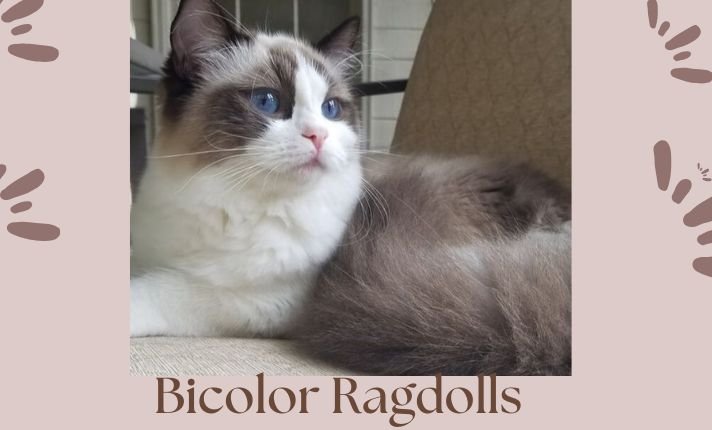Bicolor Ragdoll cats are a pattern of the Ragdoll breed, known for their characteristic fluffy fur. These cats stand out for their affectionate demeanor, blue eyes, and distinct bicolor pattern that features a charming mix of color and white, often highlighted by a “V” marking on their face. In this guide, we’ll delve into everything you need to know about the Colors and Patterns of bicolor ragdolls.
Table of Contents
What is Bicolor Ragdoll Cat
Ragdoll cats come in various colors and patterns and are officially recognized by major feline associations, such as CFA (Cat Fanciers’ Association) and TICA (The International Cat Association). The primary colors include seal, blue, chocolate, lilac, red, and cream. These colors are often combined with one of the following patterns: colorpoint, mitted, and bicolor.
The bicolor ragdoll is the pattern of the Ragdoll breed. It includes a distinctive white “V” shape on the forehead, which usually continues into white fur down the chin, chest, and stomach. The paw pads and nose are pink and the belly and legs are completely white. All Ragdolls, including the Bicolor, have striking blue eyes.
The body has color points on the ears and tail, while the rest of the fur tends to be lighter. There are several bicolor variations, including seal bicolor, blue bicolor, chocolate bicolor, cream bicolor, and flame bicolor, each featuring different color combinations.
Genetically, bicolor Ragdolls carry a special combination of genes that results in their characteristic coat pattern. The white spotting gene is responsible for the bicolor look, creating a beautiful blend of color and white that distinguishes them from the colorpoint Ragdolls.
Bicolor Ragdoll Kittens
Bicolor Ragdoll kittens are typically born completely white. Their markings gradually begin to appear over the first few weeks of life. Kittens grow quite quickly. By around 10-12 weeks, they are ready to be adopted, but they continue to develop physically and socially until they reach maturity at about 3-4 years of age.
Unlike many other breeds, Ragdoll kittens are known for their relatively slow growth rate. They can take up to 4 years to reach their full size and weight, which makes watching them grow a delightful experience.
Several Color Variations of Bicolor Ragdolls
There are numerous colors that the bicolor Ragdolls can come in: seal, flame, blue, chocolate, lilac, cream, and tortie. Below is a detailed look into the different color variations of bicolor Ragdoll cats and how to identify each type.
Seal Bicolor Ragdoll
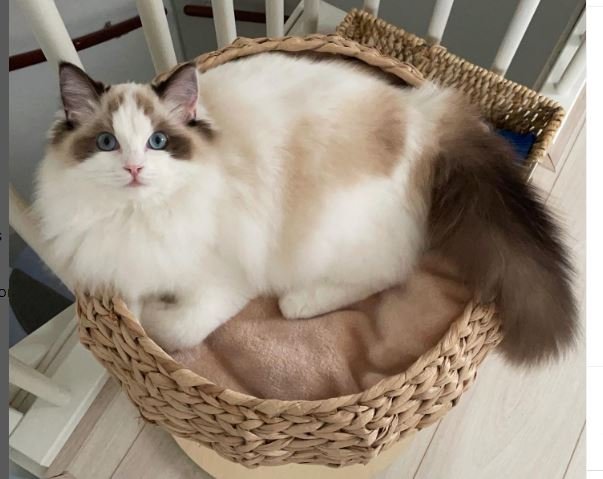
Seal bicolor Ragdolls have dark, seal-brown markings on the ears, tail, and sometimes on parts of the back—the dark brown contrasts strikingly with the pristine white fur on the legs, chest, and underbelly. The signature ‘V’ on the face is also white, giving the seal bicolor its characteristic look. The seal points tend to darken as the cat ages, giving them a more dramatic appearance.
Seal bicolor is one of the most common color variations, easily identifiable by its bold, dark markings.
Blue Bicolor Ragdoll
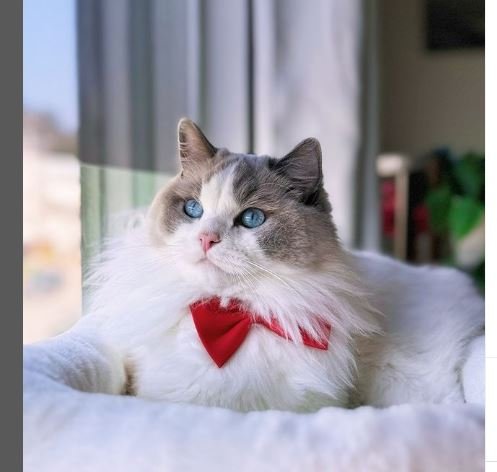
Blue bicolor Ragdolls feature bluish-grey points on their ears, tail, and parts of their face. The rest of the body is covered in soft white fur, with the classic white ‘V’ on the face that extends from the forehead down to the chin. The blue coloration is lighter and cooler compared to the seal bicolor.
Chocolate Bicolor Ragdoll

Chocolate bicolor Ragdolls have warm, rich brown points that resemble the color of milk chocolate. These markings appear on the ears, tail, and mask, contrasting beautifully with the creamy white fur on the rest of the body. The white ‘V’ on the face is more pronounced against the warm chocolate tones.
Lilac Bicolor Ragdoll
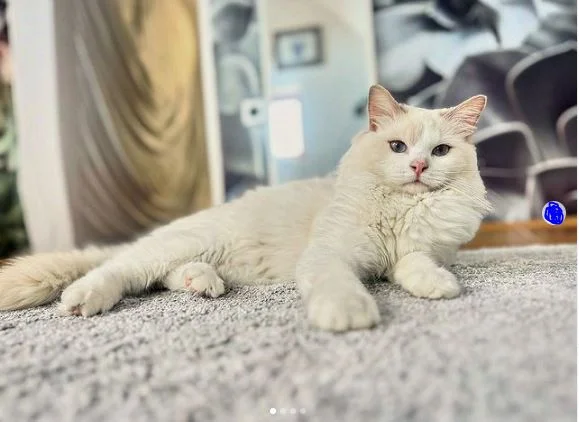
Lilac bicolor Ragdolls have a very delicate, pinkish-grey coloration that appears on the ears, tail, and parts of the face. The lilac color is one of the rarest and is often described as a dilute version of chocolate. The ‘V’ marking on the face is white, creating a soft contrast with the pale lilac tones. The body fur is almost entirely white.
Lilac is a genetically more difficult color to produce, and therefore, Lilac Bicolor Ragdolls are quite rare. Breeding the lilac color requires specific genetic traits, making it a more exclusive color.
Red Bicolor (Flame Bicolor) Ragdoll
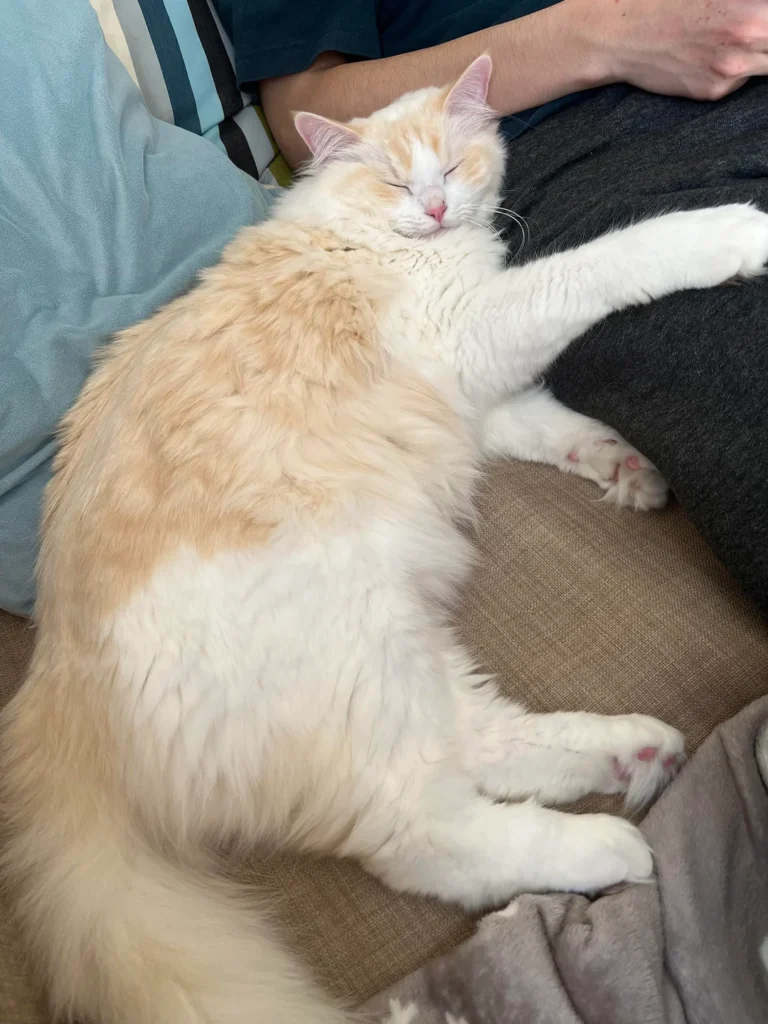
Red bicolor, also known as flame bicolor, features bright reddish-orange points on the ears, tail, and parts of the face. The bright red contrasts vividly with the white fur and the characteristic ‘V’ on the face is white, which helps to accentuate the striking red points. The body fur is typically creamy white. Red bicolors are less common.
Cream Bicolor Ragdoll
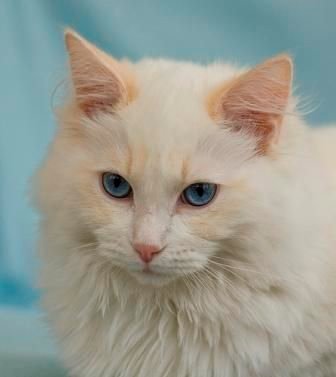
Cream bicolor Ragdolls are similar to the red bicolor, but the points are much lighter, resembling a soft, buttery cream color. These points are found on the ears, tail, and face, with the rest of the body covered in white fur. Cream colors are relatively rare compared to Seal and Blue.

Hey guys, My name is Simon Smith. I’m from Canada and live near Victoria
I live with my sweet family and have 20+ Ragdolls of different types. I love them as my children. My profession is as a hotel manager.
I love to keep Ragdolls and grow their breeder case. I have 7 years of experience.
I’m an expert in cat care. So, I’m here to provide you with new information about my cats daily. This is my blog website, so I request that you kindly visit our site daily.
If you’re a Ragdolls lover and you have any questions or confusion about cats, text me on the Contact Us page or Gmail.
Thank u
